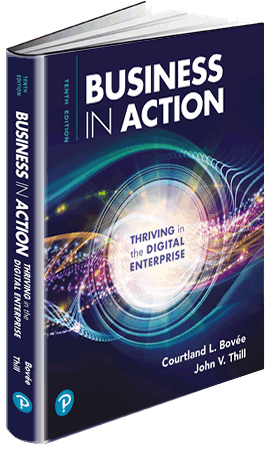
In the ever-evolving landscape of higher education, a new generation of students is reshaping the classroom experience. Generation Z, the first truly digital natives, are flooding college campuses with their unique perspectives, learning styles, and aspirations. As educators, we face the exciting challenge of adapting our teaching methods to effectively engage these students, particularly in foundational courses like Introduction to Business.
Gone are the days when presenting facts and figures sufficed. Today's educators must embrace a paradigm shift in pedagogical strategy – one that harnesses technology, emphasizes real-world relevance, and fosters a collaborative, purpose-driven learning environment. This article explores innovative approaches to captivate Gen Z students and prepare them for the dynamic world of business.
Harnessing the Power of Technology: Beyond Static Lectures
For Gen Z, technology isn't just a tool; it's an integral part of their daily lives. To truly engage these digital natives, we must move beyond traditional lectures and static textbooks. Instead, let's create immersive, technology-driven learning experiences that mirror the digital world they inhabit.
Imagine a classroom where students dive into business simulations using platforms they're already familiar with, such as Google Docs or Slack. These tools not only facilitate collaboration but also introduce students to real-world business communication practices. By incorporating financial apps and project management software into lessons, we can provide hands-on experience with the tools they'll encounter in their future careers.
Moreover, leveraging case studies from companies students follow on social media can bridge the gap between academic concepts and real-world applications. For instance, analyzing Spotify's business model or exploring Tesla's marketing strategies can spark genuine interest and foster deeper understanding of business principles.
Beyond Theory: Bridging the Gap to Practical Application
Gen Z craves tangible outcomes and practical skills. They're less interested in abstract theories and more focused on how their knowledge will translate into real-world careers. As educators, we must transform abstract business concepts into engaging, hands-on experiences.
Project-based learning emerges as a powerful tool in this context. Instead of merely discussing business plan components, challenge students to create mock business plans for products or services they're passionate about. This approach not only reinforces theoretical knowledge but also develops critical thinking and problem-solving skills.
Take it a step further by simulating the experience of running a startup. Students can work in teams to develop a product, create marketing strategies, and even pitch to mock investors. This immersive experience provides a taste of entrepreneurship and helps students understand the interconnected nature of business functions.
Partnerships with local businesses can further reinforce the connection between classroom learning and professional practice. Arrange internships, job shadowing opportunities, or invite guest speakers from various industries. These real-world connections not only provide valuable insights but also help students build professional networks early in their academic journey.
Engaging the Visual Mind: From PowerPoint to Multimedia Learning
In an era of TikTok videos and Instagram stories, capturing Gen Z's attention requires more than traditional lecture formats. These students are accustomed to processing information through visual means – infographics, short videos, and interactive content.
To cater to this visual learning style, consider revamping your teaching materials. Replace lengthy PowerPoint presentations with bite-sized learning modules that combine various multimedia elements. For example, use explainer videos to introduce complex topics like supply chain management or market segmentation. Follow up with infographic slides that visually summarize key points, making abstract concepts more digestible and memorable.
Gamification can take engagement to the next level. Incorporate game-like elements into your lessons to boost participation and retention. Online tools like Kahoot! or Quizizz allow you to create interactive quizzes that turn learning into a fun, competitive experience. For instance, a "Business Jeopardy" game at the end of each unit can serve as an engaging review session, reinforcing key concepts while tapping into Gen Z's competitive spirit.
Cultivating Collaboration and Social Learning
Gen Z thrives in collaborative environments. They value peer-to-peer interaction and learn effectively from diverse perspectives. By fostering a classroom culture that encourages collaboration, we can tap into these strengths and prepare students for the team-oriented nature of modern business.
Structure group projects that simulate real-world business scenarios. For example, assign teams to develop marketing campaigns for hypothetical products, requiring them to conduct market research, create promotional materials, and present their strategies to the class. This not only reinforces marketing principles but also develops essential teamwork and presentation skills.
Incorporate peer reviews into your assessment strategy. After individual assignments, such as case study analyses, have students exchange papers and provide constructive feedback. This process not only reinforces learning but also develops critical thinking and communication skills crucial in the business world.
Leverage technology to facilitate collaboration beyond the classroom. Create online discussion forums where students can share insights, ask questions, and engage in debates about current business trends. This approach not only extends learning beyond class hours but also caters to Gen Z's preference for digital communication.
Continuous Feedback: Fueling Motivation and Progress
In the age of instant gratification, Gen Z expects regular feedback on their performance. They're accustomed to real-time updates and progress tracking in their digital lives and seek the same in their educational journey.
Implement a system of continuous assessment and feedback. After each lesson or module, provide short quizzes or self-assessment tools that allow students to gauge their understanding immediately. These don't always need to be graded – the goal is to provide instant feedback and identify areas that might need further clarification.
Foster an open dialogue in the classroom where students feel comfortable asking questions and seeking clarification. Encourage participation by rewarding insightful questions or comments, creating a supportive environment where curiosity is valued.
Regular office hours, email check-ins, and one-on-one meetings can provide more personalized feedback. Use these opportunities to discuss individual progress, address concerns, and offer guidance on career paths in business. This personalized attention can be particularly valuable for Gen Z students who appreciate individualized experiences.
Embracing Inclusion and Purpose: Aligning with Gen Z Values
Diversity, equity, and inclusion are core values for Gen Z. They seek purpose in their endeavors and are drawn to businesses that prioritize corporate social responsibility, sustainability, and ethical practices. Incorporating these themes into your Introduction to Business course can significantly enhance engagement and relevance.
Integrate discussions about ethical dilemmas in business. Present real-world cases where companies faced ethical challenges and have students analyze the situations, propose solutions, and debate the implications. This not only reinforces ethical decision-making skills but also resonates with Gen Z's desire for purposeful learning.
Highlight how businesses can make positive societal impacts. Discuss companies that have successfully implemented sustainability initiatives or social justice programs. Analyze how these efforts affect their bottom line, brand reputation, and employee satisfaction. This approach demonstrates the interconnectedness of business decisions and societal impact, a concept that deeply resonates with Gen Z's values.
Incorporate assignments that allow students to explore the role of businesses in addressing global challenges. For instance, task them with developing a business plan for a social enterprise or analyzing a company's corporate social responsibility initiatives. These projects not only reinforce business principles but also align with Gen Z's desire to make a positive impact on the world.
Personalization and Flexibility: Tailoring Learning to Individual Needs
Gen Z appreciates personalized experiences in all aspects of their lives, including education. They're accustomed to algorithms curating content for them and value having control over their learning journey.
Offer flexible learning paths that cater to different learning styles and preferences. Provide a mix of required core content and optional modules that allow students to deep dive into areas of particular interest. For instance, alongside mandatory lessons on financial statements, offer optional modules on topics like cryptocurrency or sustainable finance for those who want to explore further.
Allow students to choose how they demonstrate their understanding of business concepts. Instead of limiting assessments to traditional exams or essays, offer a range of options. Students could create a video presentation explaining a business strategy, design an infographic illustrating market trends, or even develop a podcast discussing current business news. This approach not only caters to different strengths and interests but also develops diverse communication skills essential in the business world.
Leverage adaptive learning technologies where possible. These systems can assess a student's understanding in real-time and adjust the difficulty or focus of content accordingly. While implementing such systems may require investment, they can significantly enhance the learning experience by providing truly personalized education at scale.
Empowering the Business Leaders of Tomorrow
As we navigate the evolving landscape of business education, engaging Gen Z effectively requires a multifaceted approach. By embracing technology, focusing on real-world applications, fostering collaboration, and providing personalized, purpose-driven content, we can create a learning environment that resonates with this unique generation.
Remember, the goal isn't just to teach business concepts, but to inspire and empower the next generation of business leaders. By adapting our teaching methods to align with Gen Z's characteristics and values, we can unlock their full potential and prepare them for the dynamic, ever-changing world of business that awaits them.
As educators, our ability to evolve and innovate in our teaching approaches will shape the future of business education. By embracing these strategies, we can ensure that our Introduction to Business courses remain relevant, engaging, and impactful for years to come. The journey of adapting to Gen Z's needs is ongoing, but the rewards – in terms of student engagement, learning outcomes, and future business innovation – are immeasurable.
Why Business in Action Is the Perfect Text for Gen Z Learners
Business in Action is the ideal textbook for educators looking to connect with Gen Z students in Introduction to Business courses. This generation thrives on fast, relevant, and visually engaging content, all of which "Business in Action" delivers seamlessly. Its concise, dynamic presentation mirrors the way Gen Z consumes information: through engaging visuals, real-world case studies, and streamlined text.
Unlike more traditional textbooks, Business in Action doesn’t overwhelm students with lengthy chapters. Instead, it provides clear, digestible information that helps students grasp complex concepts quickly. The book’s use of real-world business examples from companies Gen Z already follows, like Tesla and Spotify, bridges the gap between theory and application, making learning both practical and exciting.
Furthermore, Business in Action emphasizes collaboration and technology integration—key components of a Gen Z-friendly classroom. Its digital resources, including interactive tools and multimedia elements, align perfectly with students' learning preferences and keep them actively engaged. Whether through group projects or hands-on activities, the text equips students with the skills they need to succeed in today’s rapidly evolving business landscape.
Incorporating Business in Action into your curriculum ensures that you’re not just teaching business concepts—you’re preparing Gen Z students to become the next generation of business leaders.
 Business in Action, 10th Edition
Business in Action, 10th Edition